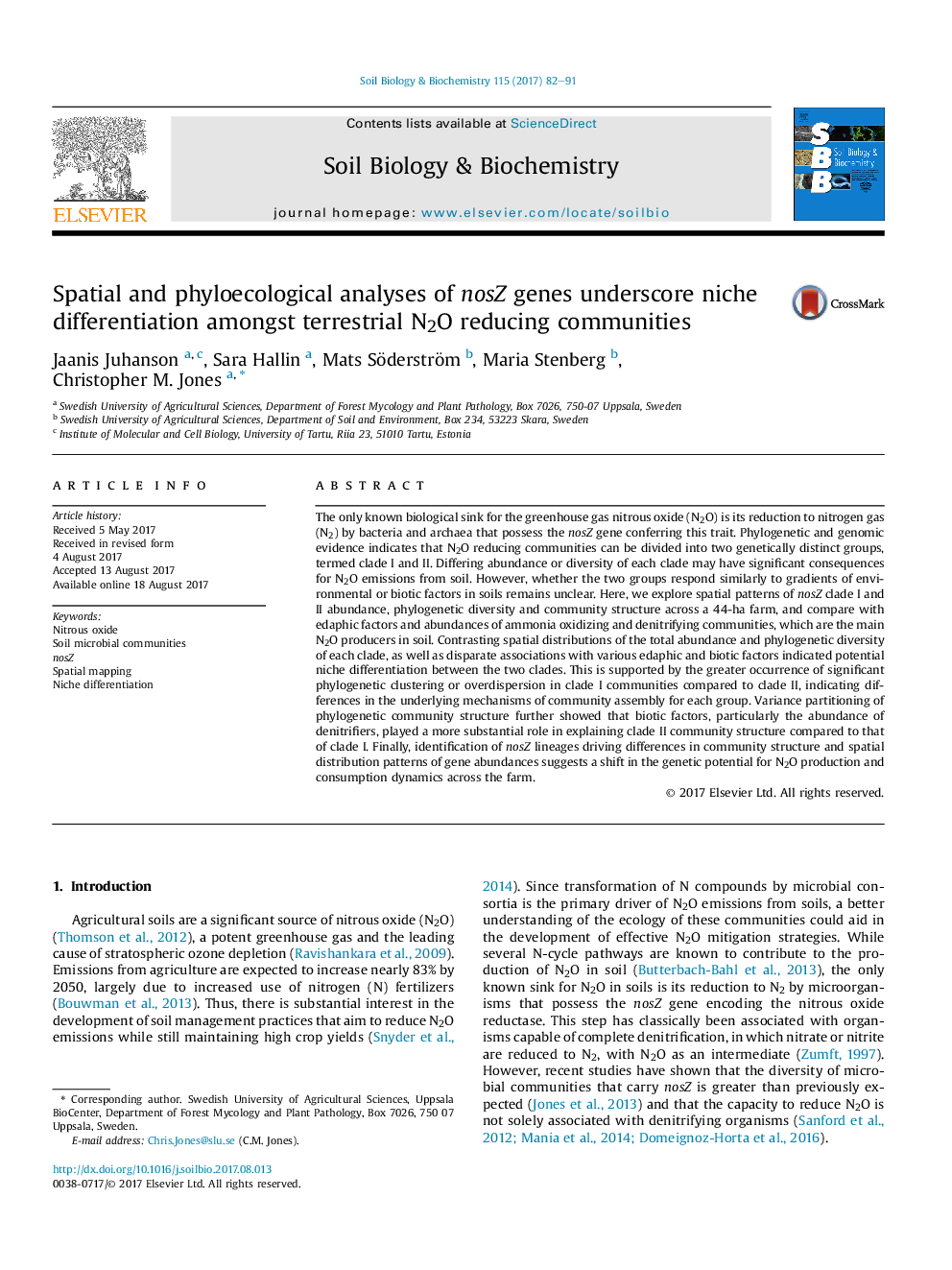| Article ID | Journal | Published Year | Pages | File Type |
|---|---|---|---|---|
| 5516228 | Soil Biology and Biochemistry | 2017 | 10 Pages |
â¢Field-scale spatial patterns of nosZ communities differ between clades I and II.â¢Biotic factors explained variation in clade II but not clade I community composition.â¢Compositional shifts suggest a gradient of N2O production and consumption dynamics.â¢Phyloecology analyses show clade I and II communities are shaped by different forces.
The only known biological sink for the greenhouse gas nitrous oxide (N2O) is its reduction to nitrogen gas (N2) by bacteria and archaea that possess the nosZ gene conferring this trait. Phylogenetic and genomic evidence indicates that N2O reducing communities can be divided into two genetically distinct groups, termed clade I and II. Differing abundance or diversity of each clade may have significant consequences for N2O emissions from soil. However, whether the two groups respond similarly to gradients of environmental or biotic factors in soils remains unclear. Here, we explore spatial patterns of nosZ clade I and II abundance, phylogenetic diversity and community structure across a 44-ha farm, and compare with edaphic factors and abundances of ammonia oxidizing and denitrifying communities, which are the main N2O producers in soil. Contrasting spatial distributions of the total abundance and phylogenetic diversity of each clade, as well as disparate associations with various edaphic and biotic factors indicated potential niche differentiation between the two clades. This is supported by the greater occurrence of significant phylogenetic clustering or overdispersion in clade I communities compared to clade II, indicating differences in the underlying mechanisms of community assembly for each group. Variance partitioning of phylogenetic community structure further showed that biotic factors, particularly the abundance of denitrifiers, played a more substantial role in explaining clade II community structure compared to that of clade I. Finally, identification of nosZ lineages driving differences in community structure and spatial distribution patterns of gene abundances suggests a shift in the genetic potential for N2O production and consumption dynamics across the farm.
